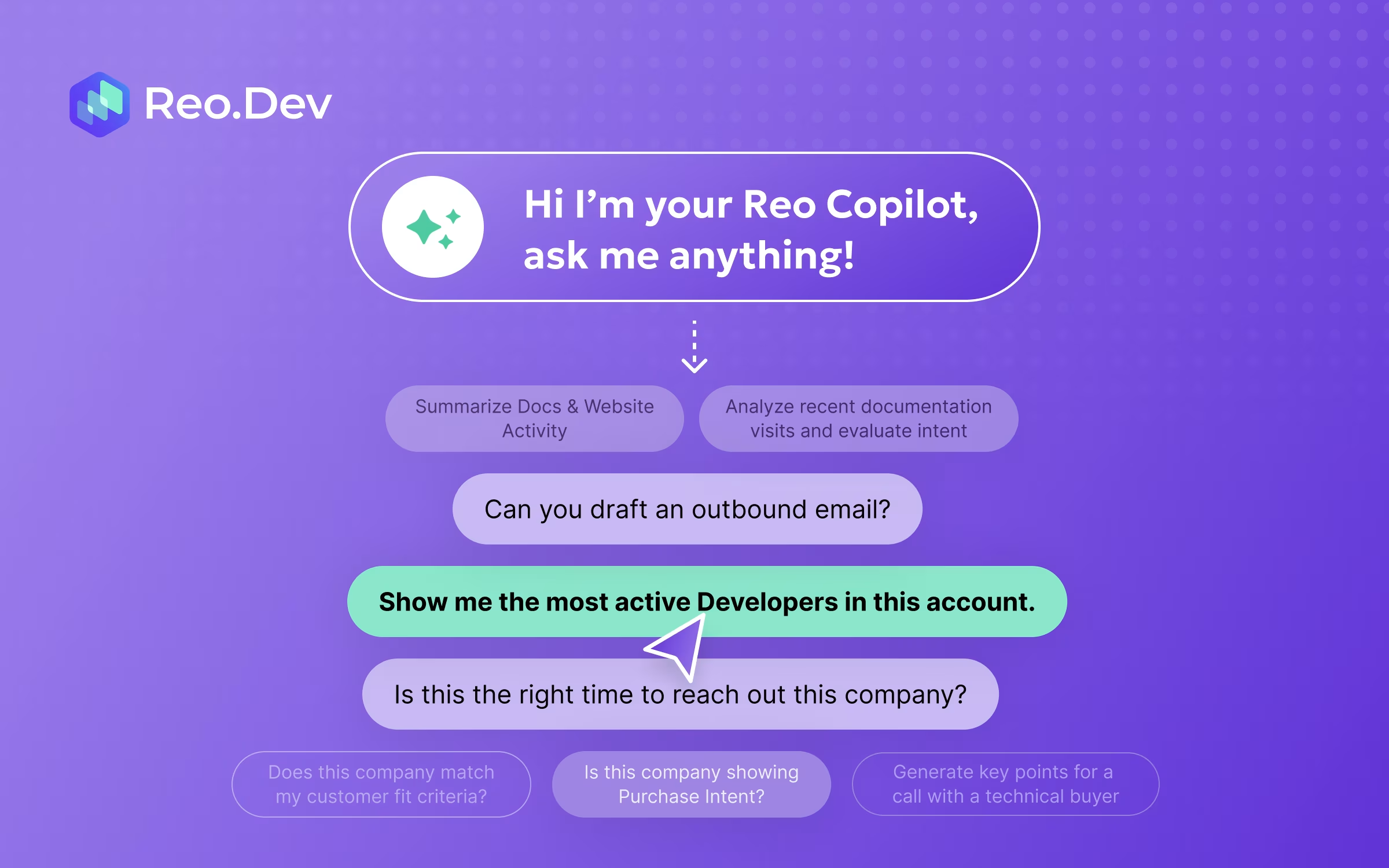What is “technographics”
Technographics refers to the “tech stack” used by companies on the basis of which devtool companies can build more precise/targeted Account Lists for their GTM motion.
For devtool companies - the usual firmographic filters - funding stage, team size, revenue, location, industry etc only tell you a part of the story. They don’t tell you how the company builds, ships, or maintains software. They don’t tell you if they even need your tool. And they definitely don’t tell you if now is the right time to reach out.
If you’re a devtool company, what technologies a company actually uses tells you more than any firmographic data ever could.
For example, let’s say you’re building a better Postgres permission layer. Your real ICP isn’t just “mid-market SaaS.” It’s companies using Hasura, Supabase, or homegrown ACLs—and struggling with scale or complexity.
When you know what tools a company actually runs, everything gets easier:
- You can spot accounts that are a great fit today - With technographics you can build ICP-fit account lists based on the actual tech stack companies are using today.
- You can frame your pitch with precision - Knowing which tools your target accounts use you can tailor your messaging to show how your product fits seamlessly into their existing stack — no generic pitches, just relevance from the first touchpoint.
- You can avoid chasing accounts that might not be a right fit - If your product only works with Kafka or Kubernetes or Snowflake — technographics help you filter these out so you can focus only on the companies where there's a clear use case.
So technographics aren’t just a nice-to-have.They’re in fact a indispensable in building a precise ICP list. Without it - you’re just building another ‘Series B with 50 + engineers’ wish list.
And while it’s easy to see why technographics is one of the strongest ICP signals for devtool companies - most companies struggle with it.
Why most GTM teams struggle with building these lists based on technographics
We see a lot of GTM teams fall into the same trap:
- Rely on scraped or outdated data (which says a company is using Terraform… but they dropped it two quarters ago).
- Use expensive tools that give you generic coverage but miss the niche developer stacks like Pulumi, Vagrant, Terraform & more.
- Skip technographics altogether and instead default to a wishlist based on Firmographics
To make up for the gaps, teams start relying on proxies:
“If they hired a DevOps engineer, maybe they’re using containers.”
“If they’re Series B, they probably have frontend infra.”
But proxies like these don’t cut it—especially in devtool GTM
So GTM team ends up wasting hours trying to verify this data, or worse, sales teams walk into conversations blind or misinformed.
That’s why you need to build a precise ICP list based on reliable technographic intelligence.
Introducing: Reo.dev’s Company Audience Feature
We built Company Audience to fix these exact problems.
Reo.Dev’s Company Audience aka technographics feature helps you build your ICP list based on actual tech stacks.
—> If you’re selling a workflow automation devtool find companies using Airflow, Prefect or Zapier.
—> If you’re building an AuthZ layer target teams using Postgres, building with Go or Rust, and running custom RBAC logic.
—> If you’re running an infra-focused product find data teams using LangChain, Haystack.
And so on…
This is the level of in-depth list building Reo.Dev’s company audience feature enables. These aren’t proxies. These are real signals that help you prioritize accounts the right way.
Here’s how you can build and leverage company audience on Reo.Dev:
- Choose the specific technology users you want to identify. Target companies using (or recently using) specific technologies—whether it’s frameworks like Next.js, infrastructure tools like Terraform, or categories like CI/CD or observability. You can use this to find accounts using your competitors tools or tools you integrate with.
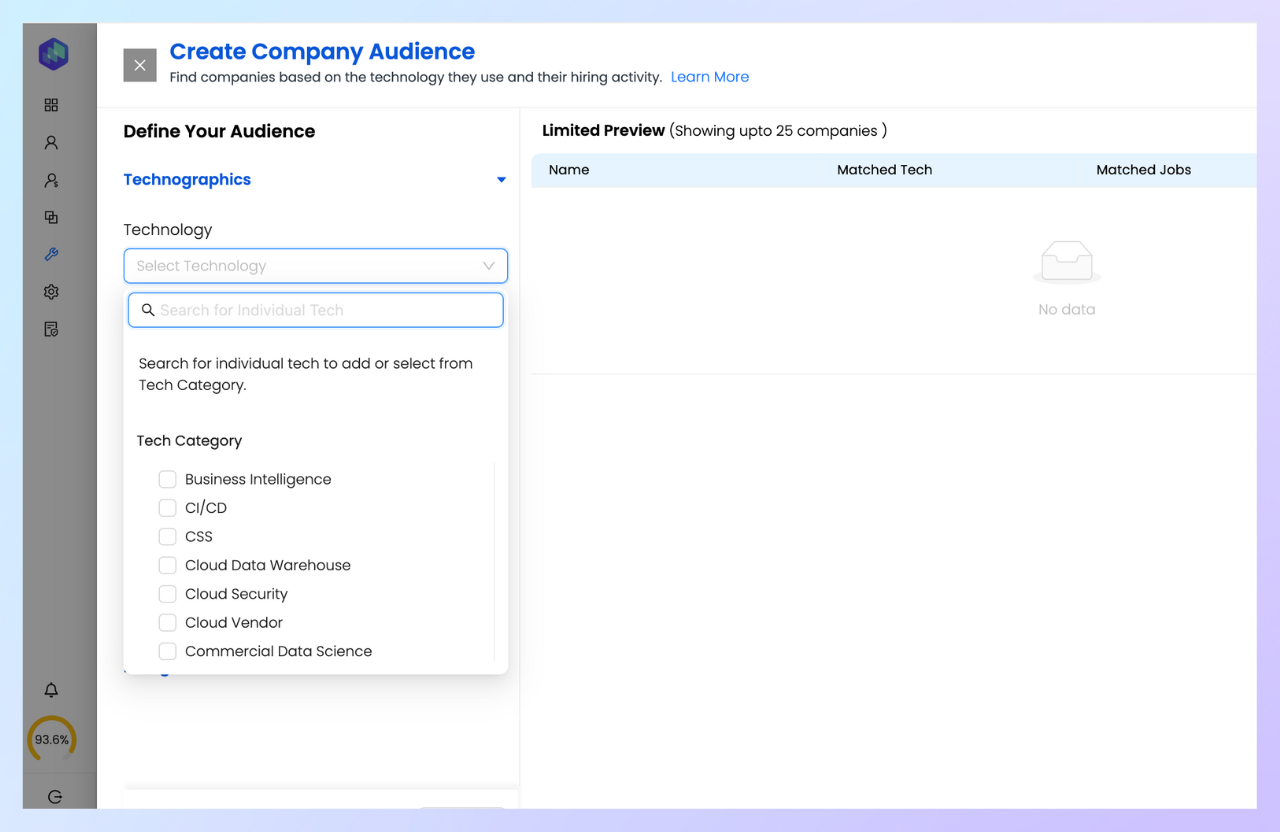
2. Add in the firmographic layers - Define firmographics like industry, employee count, location, and revenue to create a niche and more targeted ICP-fit account list.
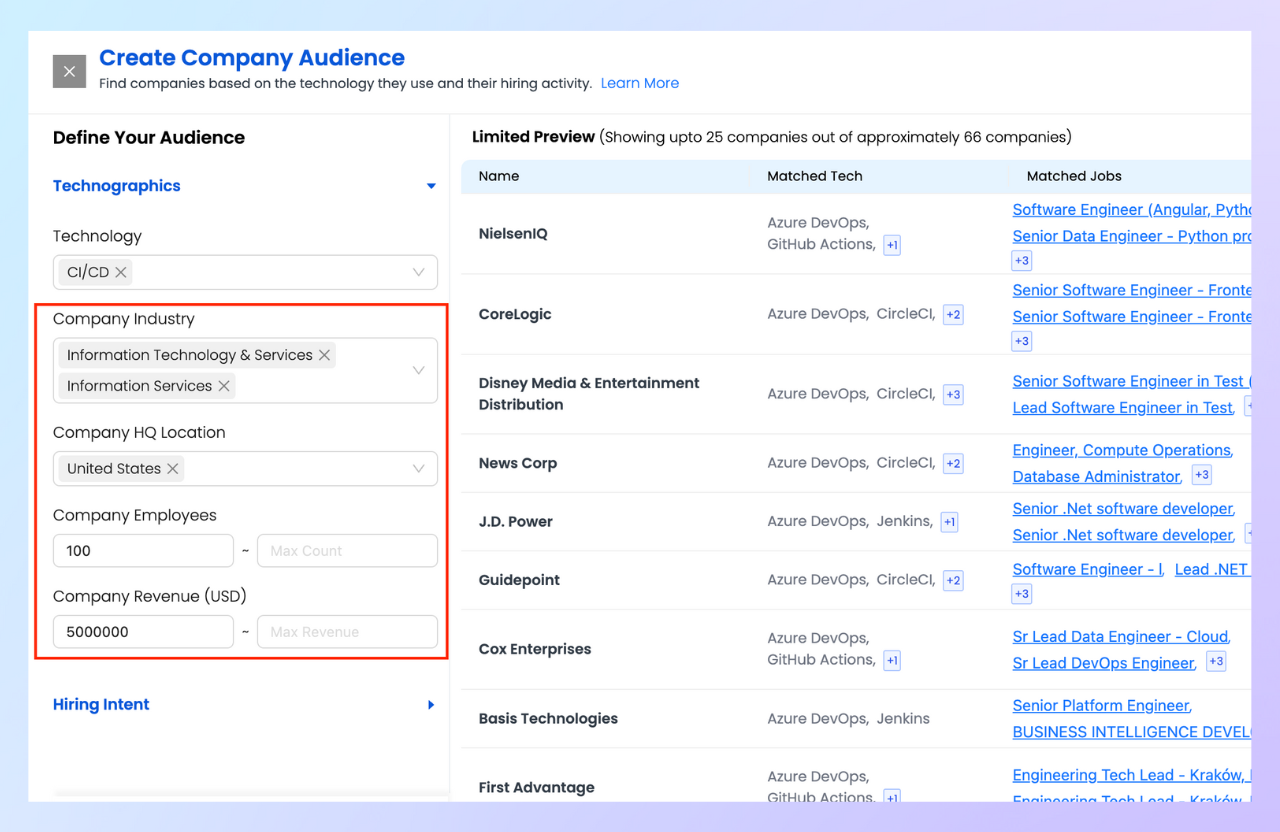
3. Leverage hiring signals to discover companies actively hiring for specific engineering roles/scaling their teams.
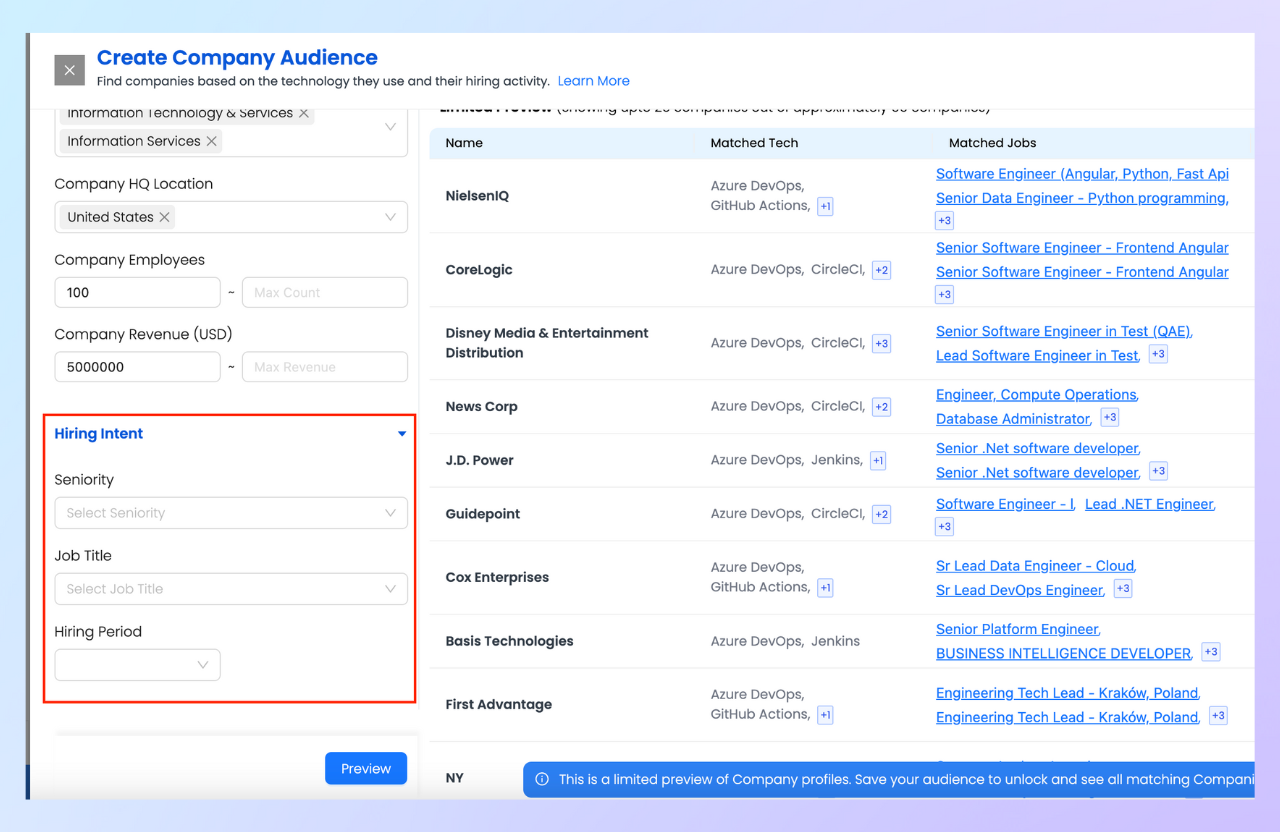
4. Find economic buyers within these companies

Why Reo.Dev technographics are different
We didn’t just bolt on a “technographics” tag.
Most “technographics” vendors scrape content and call it a day.
At Reo.Dev we rebuilt the approach - because we knew devtool GTM teams needed something deeper.
Here’s what we offer (something most common vendors miss):
- Depth: We track the technologies that actually matter for developer-focused companies like Terraform, Jenkins, Kubernetes, Redis, Vector databases, Custom ML pipelines and other such niche tech stacks.
- Accuracy: We provide up-to-date, accurate tech stack data based on key signals like job postings - ensuring you’re always working with the most current insights.
- Affordability: We give you precise targeting without the enterprise price tag. Use what you need. Pay for what works.
You don’t need more leads - you need the right ones.
If your outbound isn’t working, if your ads aren’t converting, if your SDRs are chasing dead ends—you might want to go back and start from scratch —> building the right list.
Reo.Dev’s Company Audience helps you build a clean, precise, ICP list based on the actual technologies companies use right now so every campaign and conversation starts with the right audience and the right context.
Because when your list is right, everything else just works better.

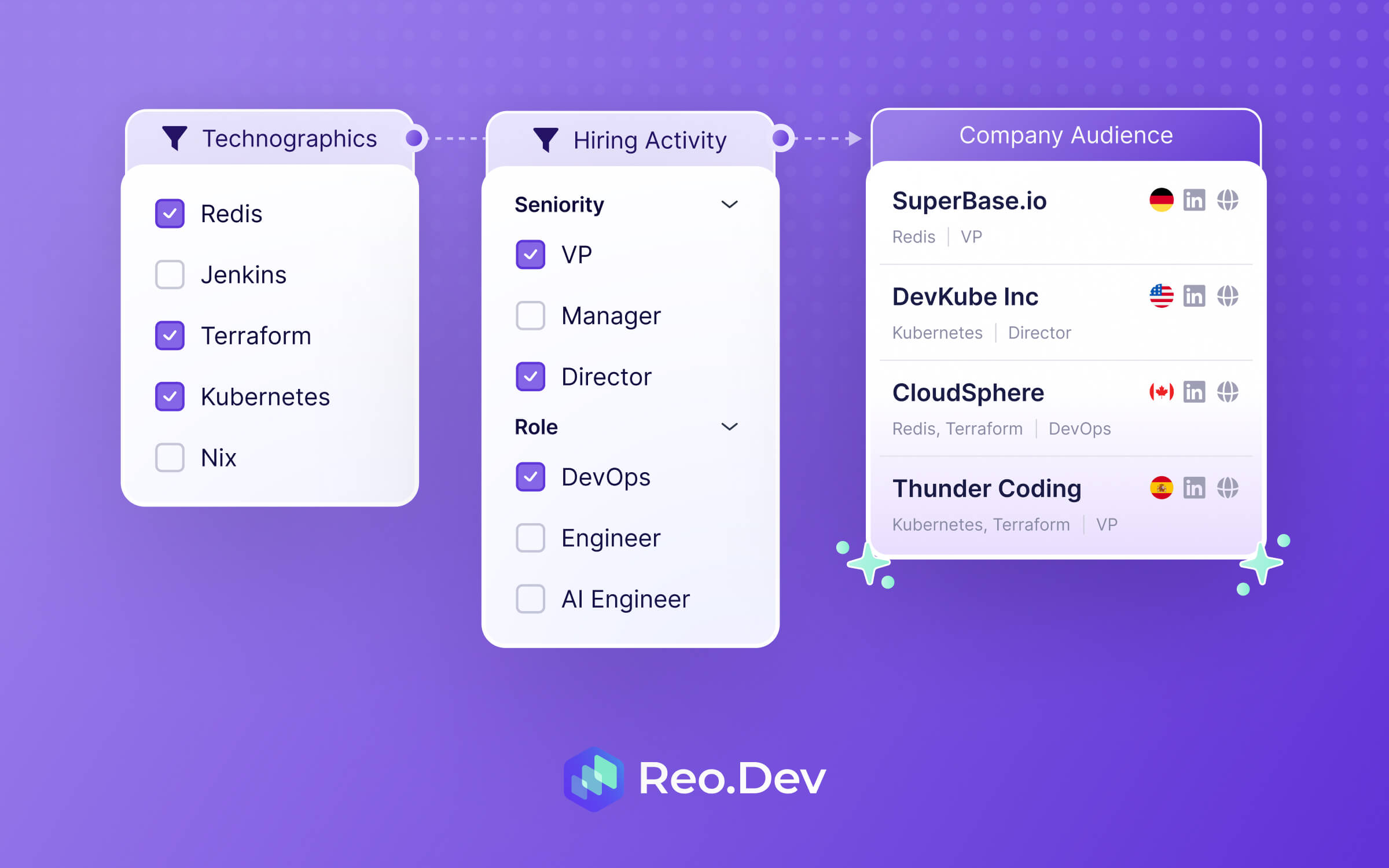




![[October Product Update] AI Sales Assistant, Vector Integration, & more in Reo.Dev](https://cdn.prod.website-files.com/67f245093fcfae53e5bcbd31/691f2381adf44b4e89134311_%5BProduct%20Update%20October%202025%5D%20-%20Thumbnail.avif)
